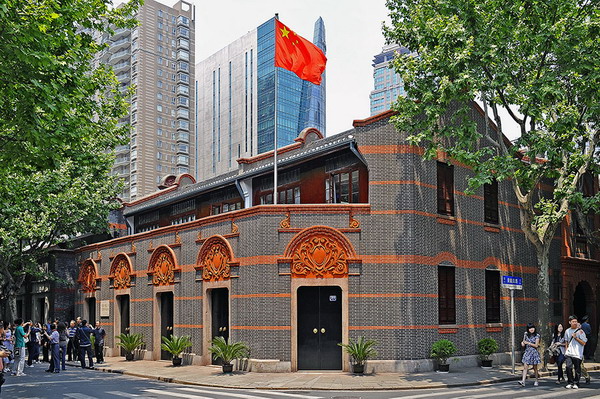China's ruling party's 'longer march'
By Ikenna Emewu (China Daily) Updated: 2016-06-25 11:34
 |
|
Tourists visit the Site of the First National Congress of the CPC in Shanghai. [Photo/VCG] |
Last week, I visited the shrine of the Chinese Community Party (CCP) in Yan'an, Shaanxi Province.
It is actually a museum, but I call it a shrine because of its essence to the party that has ruled China since 1949.
After passing through the mountains scarified and lacerated by the elements of weather, this thought of how tactical and brave the CCP leaders were in their Long March (Changzheng) filled my mind.
It was extraordinary tact and bravery that would have propelled them to flee the firepower of the Nationalist Party that was in power and embroiled in war with the opposition to such remote and impossible location.
Yan'an is just out of this world. I got there by road from Xi'an, after five grueling but lovely hours through roads and bridges built in very challenging topography. We meandered in tandem with the loops and bends of the road that is like 55% of bridges and possibly another 10% of tunnels bored through mountains and got to Yan'an before nightfall.
While leaving, I saw a clearer picture of the location from the sky seated by the window of the Hainan Air flight. The settlements weave along the curves of the valleys in between the spurs and folds of the mountains.
The terrain makes part of my tale here because of the uniqueness and how daring those people were to get to such place some 81 years ago.
The March of 80,000 CCP soldiers lasted a year through 10,000km and ended in Yan'an in 1935, with a paltry 10% of the troops, 8,000 arriving destination alive. A great sacrifice indeed.
Yes, CCP won the one year long march, but today stands in the threshold of a far longer march of 95 years, and the years ahead. Many have died, many sank, many kept afloat. Many lost the fight, many won it. The march and wars in between changed faces, but the march endures for tomorrow. Sure, the party has taken a long road.
Prior to my visiting China, the much I knew was that the country operates a communist system but not the details of it. I know communism like many from the textbooks as my own society never practiced it.
But coming to China and studying the system gave me insight to what communism means in China and how it works.
CCP was founded in 1921, just few years after the first major communist state of the Union of Soviet Socialist Republic (USSR) Bolshevik Revolution took roots. So, China actually became the ideological and political outpost of USSR style of politics.
In the days of the birth of the CCP, opposition in most parts of the world was defined in fisticuffs. So, CCP and the ruling Nationalist Party of China slugged out their political trade in bloodshed. Those were the civil wars of China and when the opposition CCP was routed, it flee to a far and remote location in Yan'an to re-strategize, ensconced for 13 years in the deep valleys.
When CCP efforts came to fruition in 1949, it took over the management of China possibly expecting a war of opposition soon after. But that has not happened till date. Today, opposition has taken a different shape, not that of warfare and blood but ideological tantrums and naggings.
To consolidate, maybe after the demise of a despot in USSR, Josef Stalin, who implemented unsparing and intolerant socialism in Russia that was a strong influence on China, CCP took a different route of entrenching development. That gave birth to the first Development Plan of 1953. March this year, as I reported the Two Sessions in Beijing, President Xi Jinping announced the commencement of the 13th Five-Year Plan that culminates in 2020.
No doubt, CCP has been a catalyst in the growth and evolution of China to where it is today. From the bloodshed days to the leadership days later, CCP has been on constant evolution and self reinvention over time.












